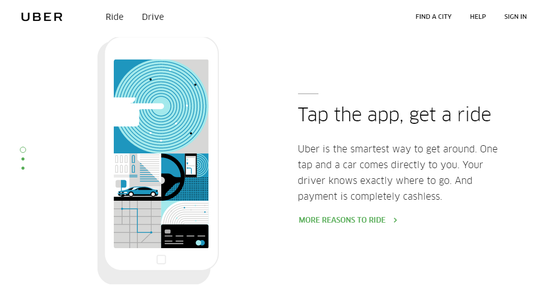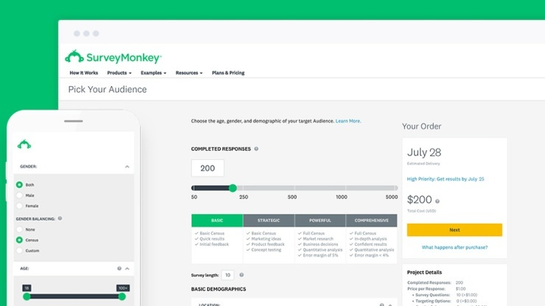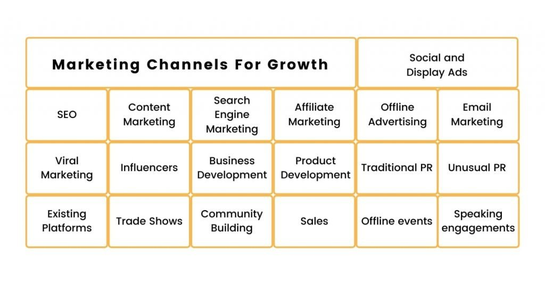Economic Downturn FAQ for Advertisers
Consider this post a breathing FAQ for all of your COVID-19 questions, with answers and effective management strategies from our team of marketing experts.
Read More
Congratulations on taking the first step in your business journey! You’ve got a great ecommerce product, a catchy company name, and a whole host of promotional ideas — but are you ready to take the plunge and launch? What are the steps to build a seven-figure brand?
Here’s a hot tip for all you budding entrepreneurs: Get the fundamentals right before opening your virtual storefront and selling your first product. With ecommerce sales accounting for 18.1% of global retail sales in 2021, competition is fiercer than ever. Meanwhile, online shoppers’ expectations have skyrocketed — most people demand ecommerce stores to deliver seamless and efficient shopping experiences across devices. It’s become clear that there’s no easy hack to instant success. Instead, you need a strategic growth plan that is focused on customers and driven by data.
In this article:
Determine Your Value Proposition
Identify Your Target Audience
Research Marketing Channels
Validate Your Product With Customer Feedback
Determine Your Early-Stage KPIs
Research Your Competitors
Get Ready to Collect Social Proof
Document Your Journey
It’s Time to Learn How to Build a 7-Figure Business
The first step of early-stage growth planning is understanding your business’ value proposition — an elevator pitch, if you will. It’s a statement that should:
A clear and succinct value proposition will help you better engage with potential investors, craft compelling messaging on your website, and inform your long-term business strategy.
Uber’s succinct value proposition is clearly laid out on its website.
Drafting your value proposition can be a challenging but worthwhile exercise. To get your creative juices flowing, ask yourself these questions:
It’s tempting to say that your product is for everyone under the sun, but the truth is that not every customer will want what you’re selling. And that’s OK! Targeting the wrong customer can do more harm than good — you may waste precious marketing resources on browsers that don’t convert. Even worse, they may leave a nasty review or discourage their friends from shopping with you.
SurveyMonkey is a great tool for collecting data on your target audience.
Your target customer should be a highly specific and relevant group based on shared demographics, traits, interests, needs, or pain points — they are the segment of shoppers that will receive the most value from your product. Don’t know where to start? Here are some easy first steps to take:
Once you have a rough sense of who your target audience is, it’s time to craft a customer profile, also known as a buyer persona. These are fictional representations of your ideal customers: who they are, what they want, and why they might purchase from you. Customer profiles will guide your long-term business strategy — you don’t want to redesign your marketing and product roadmap every time a new customer comes along.
We can’t overstate the importance of understanding your target audience. With this insight, you can better convey your value proposition, iterate on relevant product enhancements, and craft engaging marketing messaging — essentially, saving a ton of resources in the long term. The right customer can mean transforming a one-off shopper into a lifelong fan and brand champion.
Pro tip: Your target audience may change over time, and that’s OK. As your business grows, your goals will change, and you’ll need to continuously revisit many items on this planning list.
Today’s marketing landscape is a beast to conquer (and overwhelming to tackle from scratch). From promotional emails to Instagram Reels to retargeting, it’s tough to determine where to begin, especially for new businesses. All too often, it can be tempting to do everything and be everywhere at once.
Some of the many marketing channels for growth. Source
But hold up! Don’t start creating profiles on every social media platform, paying for digital ads, and subscribing to automated marketing solutions just yet. Although there isn’t a one-size-fits-all marketing strategy, there are best practices to keep in mind:
So, you think you have a showstopper of a product — but are you sure your target audience feels the same way? Beyond identifying who your potential customers are, it’s also essential at this early stage to request product feedback from them:
Beyond asking questions about your product, you can also obtain their feedback on your branding, pricing strategy, marketing ideas, and operations (such as returns and shipping policies).
Ultimately, the goal is to validate that there is a sizable market for your product. But there’s more — not only will you gain valuable insights, but you’ll also see that talking to customers is a great way to start developing meaningful relationships. Customers who feel like they’re a valued part of your business journey will come back for more. (It’s also the key to word-of-mouth marketing!)
Pro tip: It can be tricky to balance customer feedback and the direction you’ve decided for your business and product. You want to satisfy potential customers, but trying to appease every request can kill your brand. This is where having a team comes in — they can validate the validity of potential customers’ feedback, as well as whether the features you’ve iterated should stay or go.
How do you know if your launch is a raging success or not? Here’s where key performance indicators, or KPIs, come in.
KPIs are a way to measure whether you’re achieving your outcomes; they’re the metrics that’ll reveal where to dedicate more or fewer resources to. Every business has unique goals, which mean different KPIs. However, some popular ones for ecommerce brands are:
With 2.14 billion global ecommerce shoppers clicking, browsing, and checking out every day, it’s undeniable that the ecommerce landscape is more competitive than ever. To stand out from the crowd, it’s crucial that you spend time researching your competitors (or even better, conduct a competitor audit): what they’re selling, how they’re selling, and what their shortcomings are. This will give you valuable insights into potential opportunities.
And if you find out that your competitors are better poised for success than you are — maybe they have more resources, an established community of loyal customers, or have been in the market for years already — don’t fret! Continue to improve your product, experiment with your business model, and think outside of the box.
It may sound cliche, but it’s true: Competition is what drives innovation.
Social proof is a powerful marketing opportunity — real stories from real customers are an easy way for your business to build trust and attract more customers. (Think of it as free content that you can easily feature on your website and social channels.)
Example of social proof featured prominently on a website. Source
That’s why it’s important to have the infrastructure ready to collect testimonials and reviews before you officially launch your business and sell your first product. Whether it’s an email sequence that reminds customers to leave a review, a Trustpilot widget on your site, or a social media manager who’ll trawl through user-generated content and testimonials, don’t let potential social proof go to waste.
You’ve probably realized this by now, but the journey of launching a business is rarely smooth sailing. (Trust us: It’s impossible learn how to build a 7-figure business without facing some hiccups along the way.) While it might be tempting to forget about the struggles and challenges during this initial early stage, take a moment to document the process by:
These are all great content pieces that you can use later for your website or social media (or simply as a reminder of how far you’ve come). Remember: People don’t just buy products; they buy your “why.” Whenever possible, humanize your brand via real people and authentic storytelling.
Our final piece of advice for early-stage businesses is to scale responsibly, evolving your strategy over time. It’s easy to be tempted by new opportunities — technologies, products, markets — but one of the biggest reasons why new businesses fail is they overspend and scale prematurely.
For savvy entrepreneurs wondering how to build a 7-figure business like yourself, remember this: Focus on your customers, and make sure that your growth strategy is appropriate for where your brand sits in the business lifecycle.
If you’re feeling a little overwhelmed, it might be time to turn to a trusted partner or expert. AdRoll does precisely that by handling your marketing channels, including emails, digital ads, and retargeting — in other words, the legwork to take your brand to the finish line. For more information on how to build a 7-figure business, check out our Marketing Resource Library.
Last updated on December 21st, 2022.



